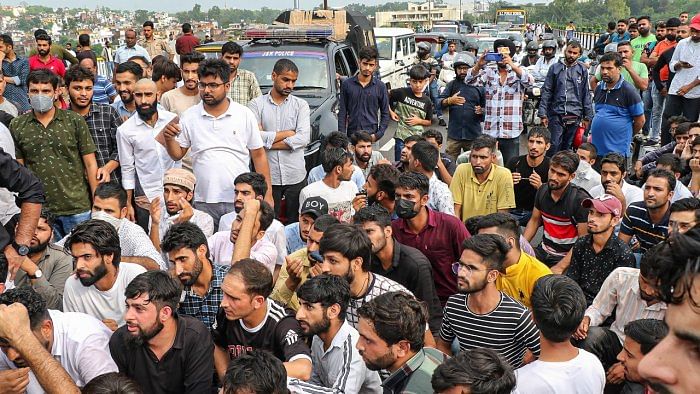
The Centre has introduced a bill to include four communities from Jammu and Kashmir in the Scheduled Tribe (ST) list - "Paddari Tribe", "Gadda Brahmin", "Koli", and "Pahari Ethnic Group", reported The Indian Express. The Constitution (Jammu and Kashmir) Scheduled Tribes Order (Amendment) Bill, 2023 was tabled in the Lok Sabha on July 26.
Also Read | 6 prominent leaders seek Centre's intervention in addressing unrest among Gujjars, Bakerwals in J&K
The current ST communities in J&K
The main ST communities in the Union Territory are Bakerwals and Gujjars, who are dominant in the districts of Poonch, Rajouri, Reasi, Kupwara, Ganderbal, Anantnag, Kishtwar, and Bandipora. Out of these, the Bakerwals are mostly nomadic. The Gujjar-Bakerwal form the third largest group in J&K after Dogras and Kashmiris. They were given ST status in 1991, along with two minority groups of Sippis and Gaddis. This empowered these communities with 10 per cent reservation in educational institutes and government jobs.
In 2019, they were provided with 10 per cent quota in the Lok Sabha and the J&K Assembly as well. This was done to provide them representation politically as well. Centre's proposed move to expand the ST list has triggered protest from the Gujjar-Bakerwal communities.
They are apprehensive about sharing the reservation benefits with others, as it will shrink their share of quota. "It (the Bill) may entail additional expenditure on account of benefits to be provided to persons belonging to the said [four] communities," the bill says.
Pahari Ethnic Group
Paharis include Hindus, Sikhs, Muslims, and all those people of Kashmiri origin who settled in Rajouri and Poonch districts over a period of time. Paharis also include upper caste Hindus and also the ones who were displaced from Pakistan Occupied Kashmir.
In 2014, then-J&K CM Omar Abdullah proposed a 5 per cent reservation for Paharis. However, Governor N N Vohra refused to approve the Bill.
In 2019, the Paharis finally got 4 per cent quota in education and jobs when Satyapal Malik was the Governor. In the same year, Justice (retd) G D Sharma Commission was set up to identify educationally, socially, and economically backward communities. In its report, the commission recomended Scheduled Tribe status for Kolis, Gadda Brahmins, Pahari Ethnic Group, and Paddari Tribe. This report was forwarded to the Tribal Affairs Ministry. In 2022, the Registrar General approved it.
Paddari Tribe
The Paddaris live in the hilly remote area of Kishtwar district. As per the 2011 census, Paddari population is around 21,548 - 83.6 per cent Hindus, 9.5 per cent Buddhists, and 6.8 per cent Muslims. The people of this area speak the Paddari language.
The Gujjar-Bakerwal resisting reservation for Paddaris, along with the Paharis, is based on the argument that they do not fall in the single ethnic group. They are a blend of different religions and castes who happen to speak the Paddari language.